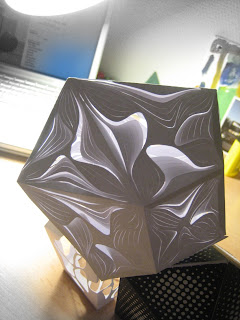Observing how my little natural builder aggregate his "components" also give me some inspirations and motivations to continue this exploration. Another inspiration come from the hairy surface of the hendecahedra. Is it possible to make the component flexible and give this "soft" texture instead of the rigid texture from the physical model?
Finally, working in Maya has brought me so much frustrations because Particles doesn't work in my case. The only model that getting close to imitate the behaviour of the physical model would be using Instance copy and animate the objects with gravity field. But this Maya model containing only 32 simplified components already dragged the computer to almost frozen... don't know how to continue...
"In their bound form, aggregates are by far the most ubiquitous materials in architectural construction. However, there are few precedents for using loose aggregates in any significant way, despite their ability to swiftly interact with a given environment. Michael Hensel and Achim Menges argue for a better understanding of the behaviour of such materials in order that they can be used in their loose form. Aggregates are formed not through the connection of elements with joints or a binding matrix, but through the loose accumulation of separate elements. This approach therefore requires a radical departure from architectural design based on assemblies and assembly processes." - Architectural Design, March/April 2008.



















































